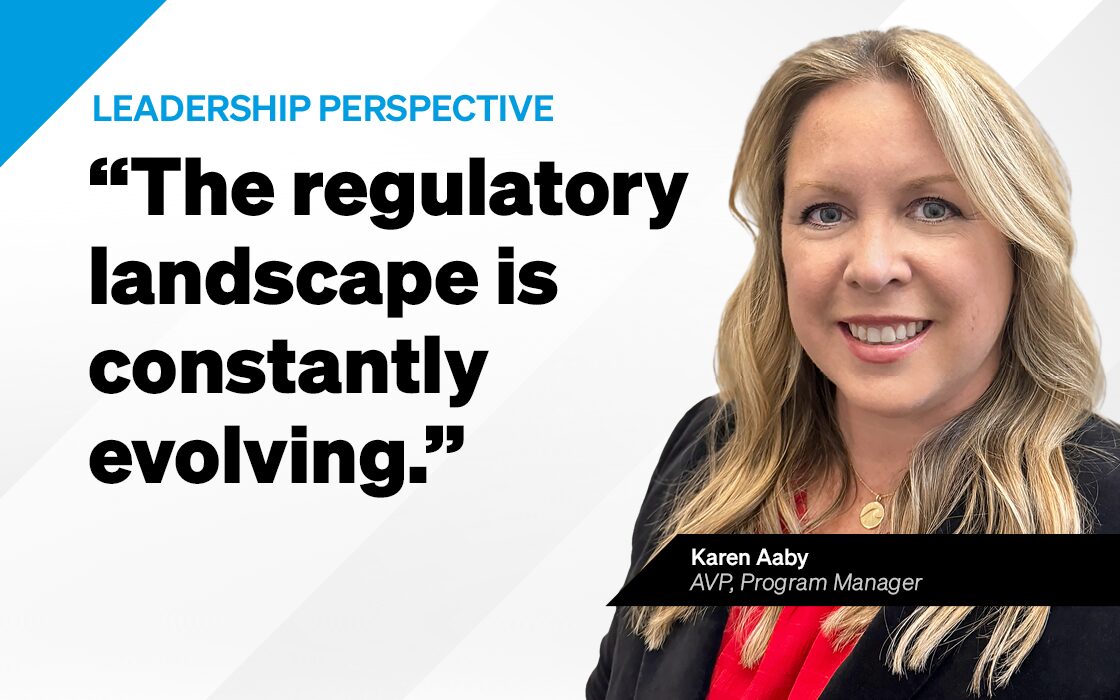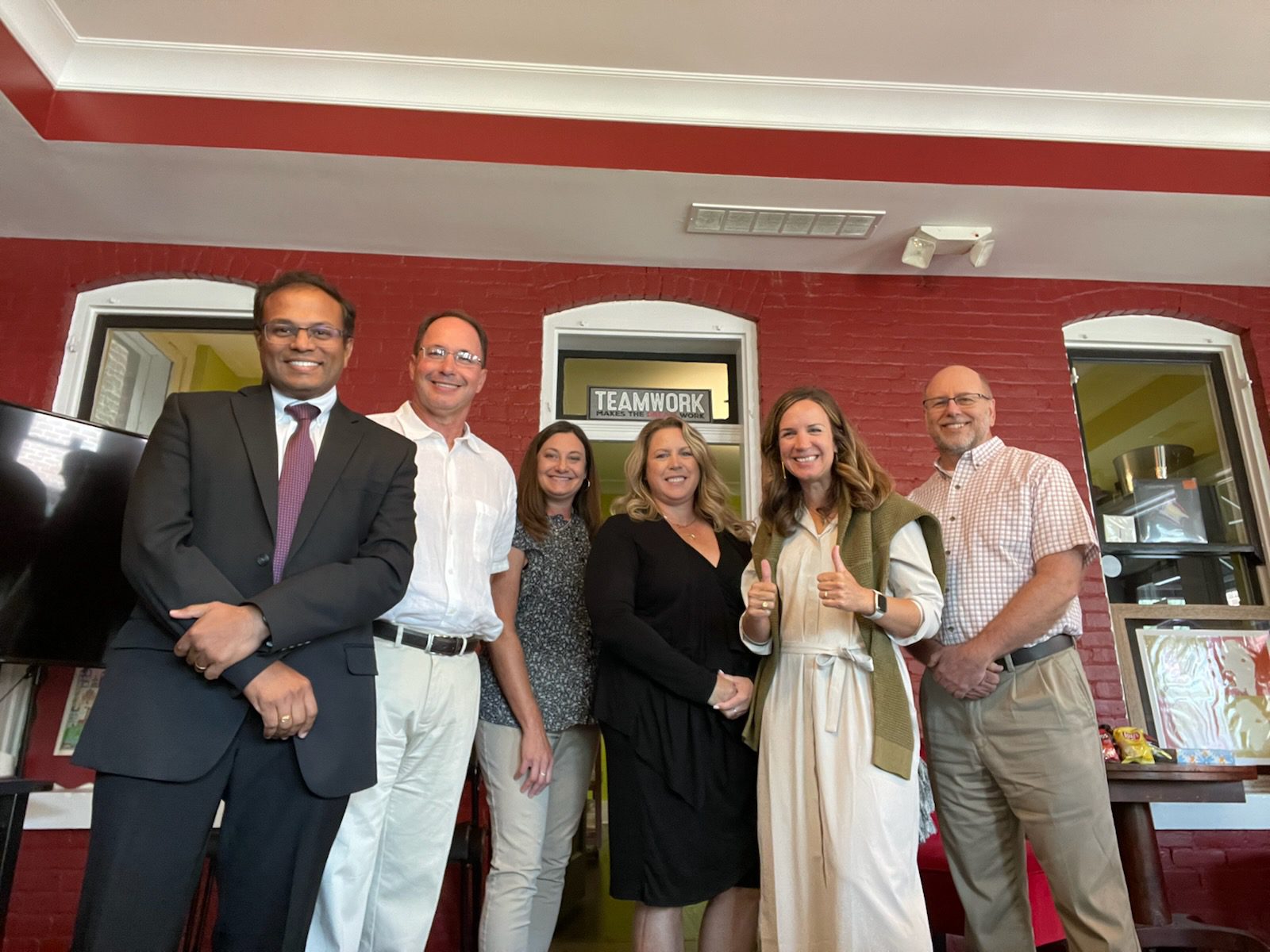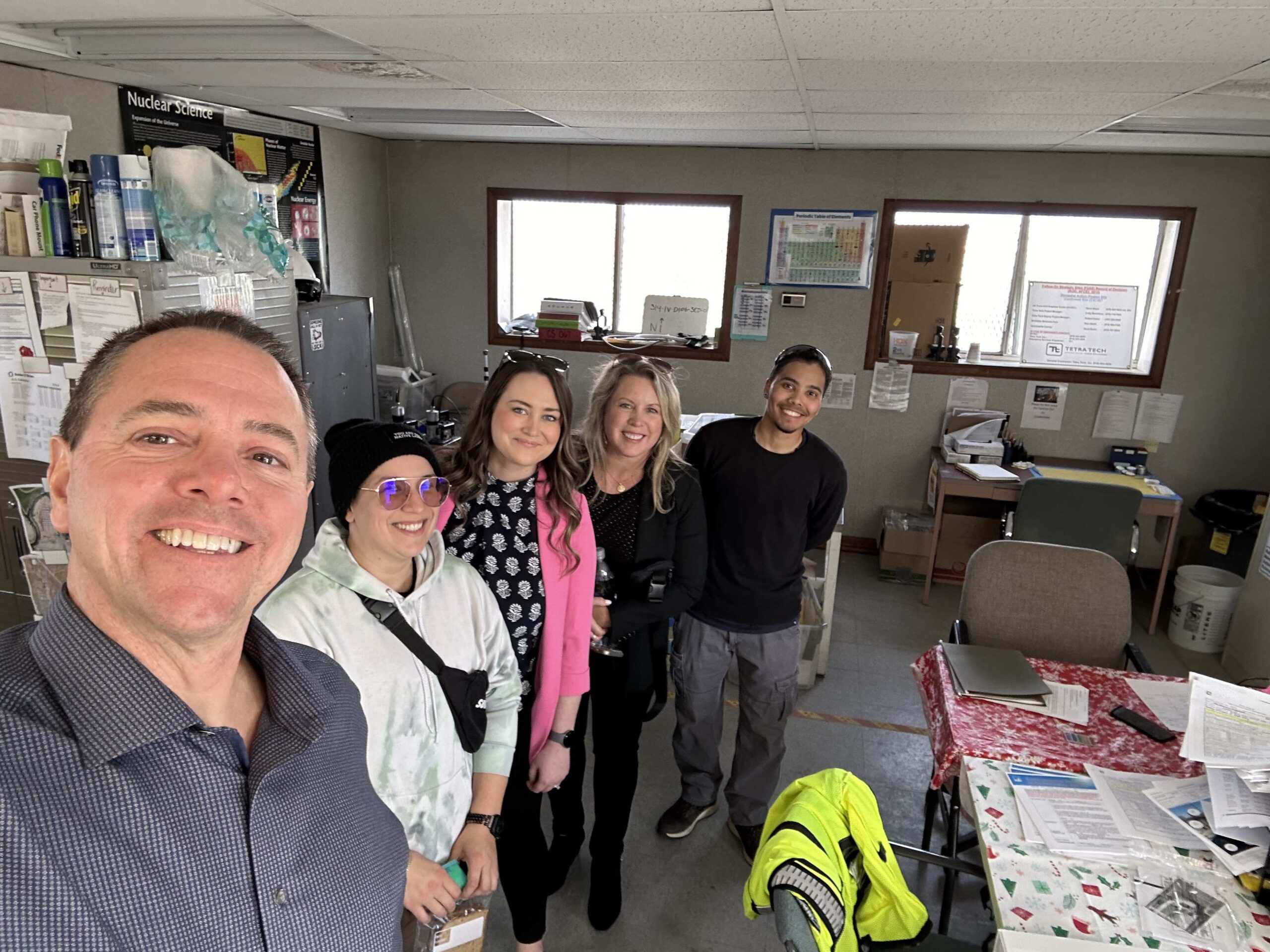News & Insights
Navigating the complex landscape of environmental regulations: A Q&A with Karen Aaby
Karen Aaby shares how her passion for environmental policy is leading to big impacts for government programs across the U.S.

Navigating the environmental regulatory landscape is a critical and complex aspect to many of our clients’ projects. Just ask Karen Aaby, an associate vice president and program manager at Salas O’Brien with nearly three decades of environmental policy and compliance consulting experience.
Karen supports government programs across the U.S., understanding the latest policies and collaborating with cross-functional teams to ensure compliance and long-term project success. Learn more in her Q&A below.
Could you tell us about the work you do and the impact it has for your clients?
The work I do in environmental policy and regulatory compliance is at the initial stages of projects, looking at an area or site location for future development and assessing potential compliance, real estate, and/or contamination issues. This early involvement can help identify potential environmental impacts, develop mitigation strategies, and ensure compliance with environmental laws, leading to smoother project execution. We guide our clients and identify future challenges so they can make the best decisions, often leading to cost savings and project efficiencies in the long run.
A big part of this involves knowledge of the latest policies and regulations, including the Clean Water Act, Clean Air Act, Endangered Species Act, Resource Conservation and Recovery Act, and the Safe Drinking Water Act, and of course the National Environmental Policy Act (NEPA) and the Comprehensive Environmental Response Compensation and Liability Act (CERCLA). Each of these have been enacted over the last few decades to safeguard our environment and mitigate negative impacts on our society. This landscape is constantly evolving.
The policy aspect is what I enjoy most, being able to understand and apply the latest information to the end goal and help our clients out. I actually have a marine biology background and studied marine science and environmental policy in college. I did various studies with boating and fishing and sustainability, and quickly realized I wasn’t cut out for work in a lab. I enjoy the hands-on site work and policies.

How does this apply to the federal government work you support?
Federal work has been a constant theme throughout my career—nearly every project or program requires some type of expertise in this area. Early on I worked with the U.S. Customs, Air Force, Department of Defense, and the FAA.
I currently manage an on-going program with the U.S. Army Corps of Engineers (USACE), Army Reserve Installation Management Directorate, helping them with their environmental compliance projects, including NEPA, Cultural Resources, Resource Conservation and Recovery Act (RCRA), and CERCLA projects. We are responsible for preparing the required ECP/ECP-Us, which look at the environmental condition of the property to make sure that it’s clear of environmental impacts and hazardous contamination so the USACE can dispose of or get a new lease. We’ve also completed environmental assessments to determine whether the Army Reserve’s action will significantly affect the environment, as well as hundreds of studies for Army Reserve Centers, going on-site to look for hazardous materials, petroleum materials contamination, lead-based paints, asbestos containing materials and the like. This is where CERCLA, RCRA, NEPA, and the regulations are involved.
Where needed, I also support private projects across the country. I currently manage a project for Pacific Gas and Electric (PG&E) on the West Coast to support their undergrounding efforts of 10,000+ miles of utility lines to prevent ignition of fires.

Is there a project in your career that was especially significant to you?
The work I did with the FAA stands out. I was performing environmental studies and environmental compliance audits on runways, as part of a team installing antenna systems to prevent runway accidents. Working with facility engineers and radar technicians, I was there with the environmental perspective to make sure the locations would avoid wetlands, historic artifacts, endangered species, and other protected areas. We were identifying anywhere from 10 to 20+ locations per airport.
This one was meaningful because of the environmental protection aspect and public safety goal. The right locations allowed the system to triangulate accurately to avoid runway accidents—we were helping the safety of the country.
What are some key environmental issues that clients are increasingly concerned about, and how do we address them in our solutions?
A highly visible topic is PFAS contaminants, the “forever chemicals” in our environment. On April 10 this year, the EPA announced the final National Primary Drinking Water Regulation (NPDWR) for six PFAS, expanding the regulations by setting a Maximum Contaminant Level Goal (MCLg) of zero and enforceable Maximum Contaminant Levels (MCLs) at 4.0 parts per trillion for PFOA and PFOS. This changes how we measure and assess PFAS and, while it is yet to be seen, some speculate that this could have a ripple effect budgetarily to how other policies are managed.
Others that are top-of-mind include climate change and environmental justice, with greater attention and action by regulators and policymakers on the impacts of our environmental landscape and related regulations on low-income and minority communities.
It’s a bit of a moving target. Our work involves keeping a constant eye on regulatory actions and staying informed through the Federal Register and other relevant databases.
Reflecting on your professional journey, what was the most impactful advice you have received?
What resonates with me is not necessarily a piece of advice but a leadership approach. You know the saying, “actions speak louder than words”? I think of my manager Andrea Sodja when I hear that phrase. It’s not just about her advice but how she leads me and the rest of her team, and this carries through in our own leadership styles.
She guides and actively pushes us to try new ways to approach situations and take risks instead of providing a directive. She provides a unique viewpoint and reminds us that it’s important to look at your work from a different perspective from time to time. If you stick to practices you are comfortable with and never try anything new, your professional growth will stagnate.